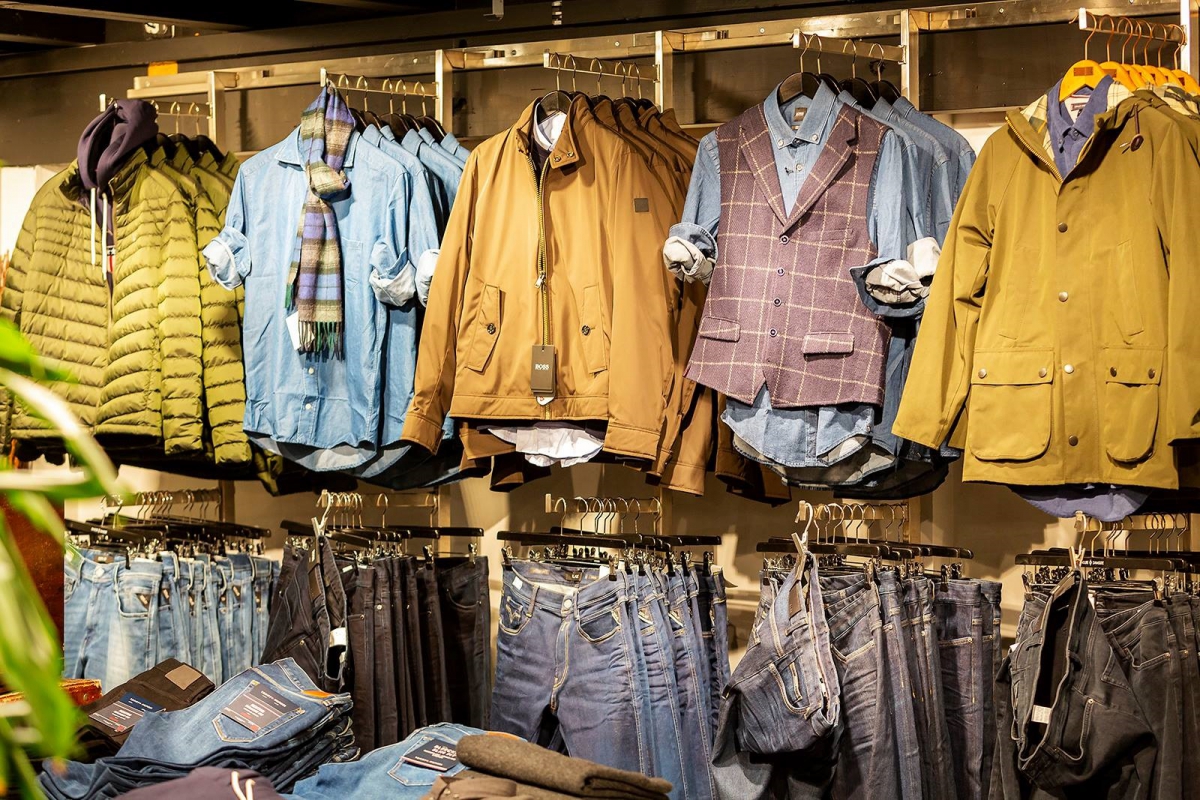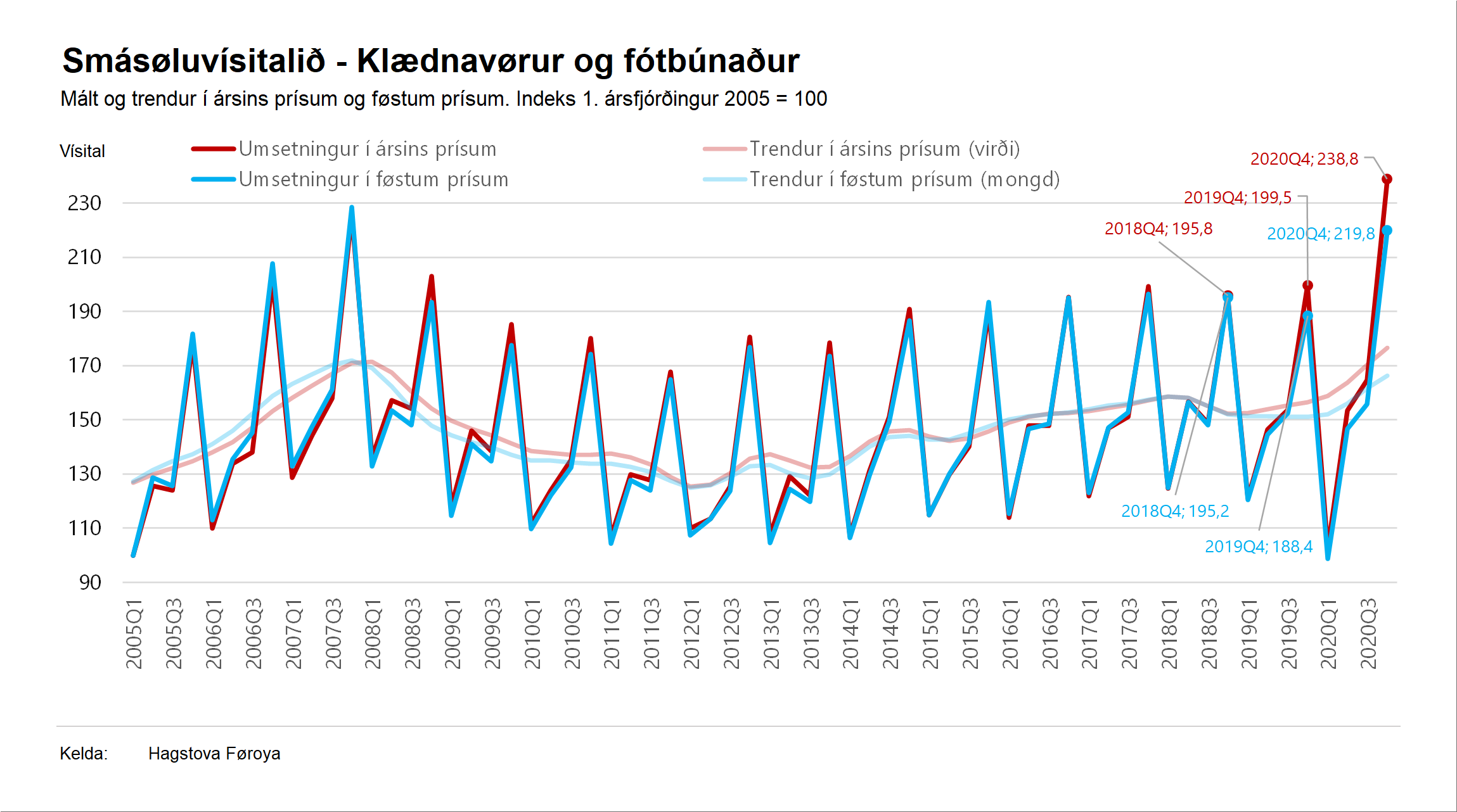Retail trade index
26. Mar 2021
Sales of clothing and footwear up by 20%

Faroese retailers have been kept busy during the Covid-19 pandemic.
Retail sales figures are divided into the following three main commodity groups: ‘groceries and non-alcoholic drinks’, ‘furnishings and household equipment’ and ‘clothing and footwear’.
The figures for retail sales in value and volume terms for Q4 2020 show that Faroese households have significantly increased their spending on groceries and non-alcoholic drinks. This gives a clear indication that the pandemic has not had a negative effect on consumer confidence.
The ‘groceries and non-alcoholic drinks’ commodity group saw an 11% year-on-year increase in turnover in Q4 2020. The average turnover in this group for the whole of 2020 was unusually high, at just below 14%, compared to 2019. Prices in this group saw an average increase of 0.7% from Q4 2019 to Q4 2020.
Sales in the ‘furnishings and household equipment’ commodity group are also on an increase. The turnover went up 15% from Q4 2019 to Q4 2020. Q2 and Q3 in 2020 saw year-on-year increases of 11% and 16% respectively. Prices in this group remained largely unchanged from 2019 to 2020.
The biggest turnover increase was in the ‘clothing and footwear’ commodity group, rising by 20% in Q4 2020 compared to Q4 2019.
The international travel restrictions during the Covid-19 pandemic have to a large extent prevented Faroese people from travelling abroad to buy Christmas presents, which has been common in previous years. Although Christmas sales are not specified in these figures, these travel restrictions undoubtedly play a significant part in the increased retail sales in the Faroe Islands.

On average, domestic demand for products in all three main commodity groups combined increased by just over 10% from 2019 to 2020. From 2010 to 2019, the average annual turnover increase for all three groups was 3%. This means that retail